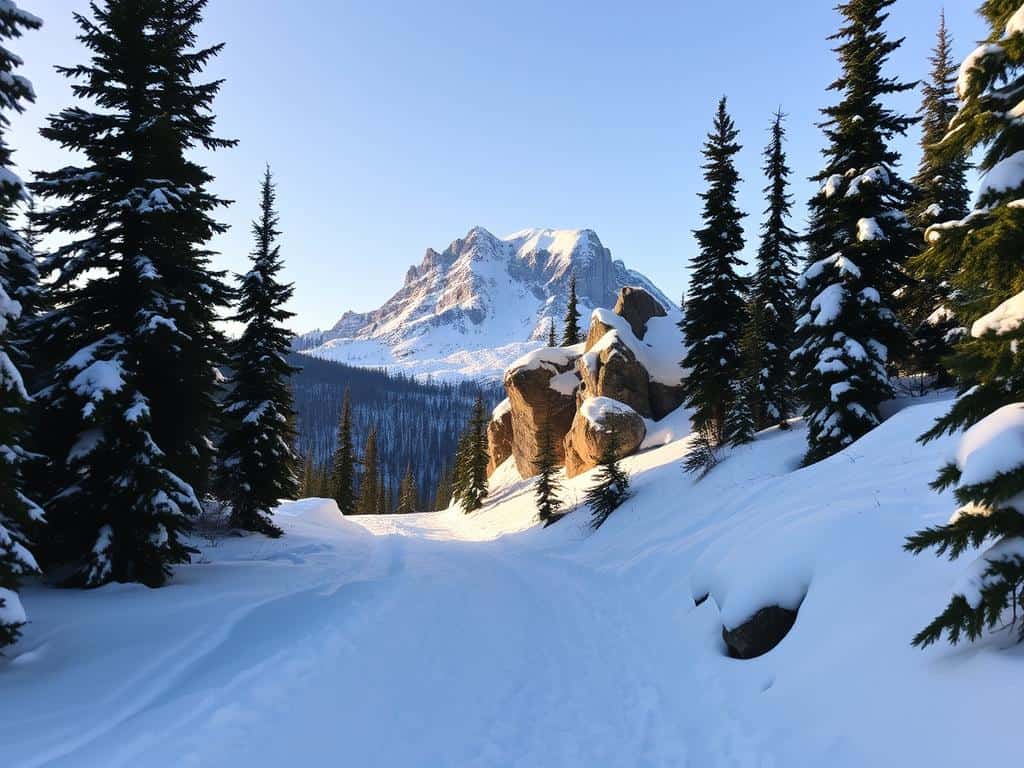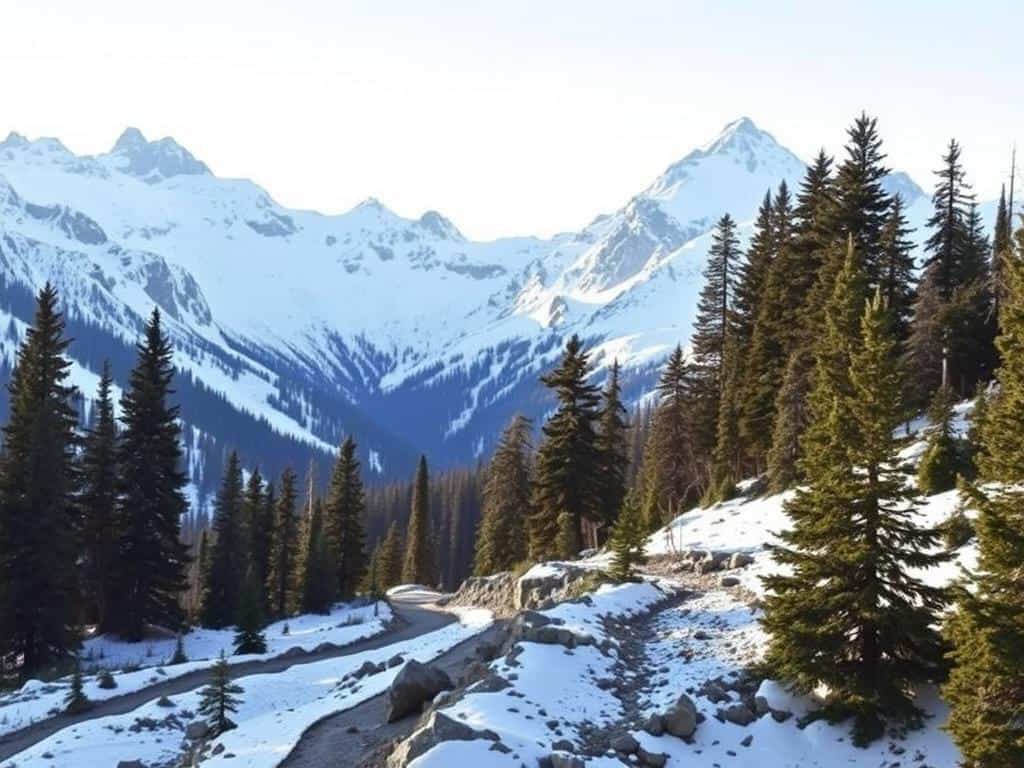Winter can feel quiet, with snow and silence all around. But for me, it’s a time for amazing adventures. The cold air and snow crunch under my feet are exhilarating. Walking on snowy trails feels like entering a magical world.
I’m here to share my favorite winter hiking spots. These places turn cold months into exciting times. Whether you’re a seasoned hiker or new to winter trails, these spots will amaze you. So, get ready, dress warmly, and let’s find the best winter hikes together!
Key Takeaways
- Winter hiking offers unique and breathtaking experiences.
- Each trail has varying difficulty levels, suitable for all hikers.
- Proper gear is essential for safe hiking in cold weather.
- Snowy landscapes provide stunning photographic opportunities.
- Winter hikes can be incredibly rewarding and refreshing.
Introduction to Winter Hiking Adventures
Winter hiking is a thrilling way to connect with nature in the cold months. Snowy landscapes and quiet forests make hiking special. The cold air makes trails feel more alive, inviting us to explore.
Winter hiking comes with unique challenges. I always check the trails and pack the right gear. This includes extra layers, snacks, water, and traction aids like Yaktrax.
With the right gear, winter hiking is exciting and safe. I wear layers to stay warm in changing weather. Whether in Flagstaff or national parks, winter hiking is beautiful and peaceful. With careful planning, these adventures are my favorites.
Best Winter Hiking Destinations
Exploring the best winter hiking spots can be incredibly rewarding. Each trail has its own charm and challenges. They are perfect for those who love snowy landscapes and exciting adventures. Here are some top trails in Colorado, Tennessee, and Oregon for your winter hikes.
Jud Wiebe Trail, Telluride, Colorado
The Jud Wiebe Trail is a top pick for winter hiking in Colorado. It’s a 3.2-mile loop that’s moderately challenging. It takes about 2.5 hours to finish, reaching an elevation of 10,900 feet.
The views of Telluride Valley are stunning, best seen on clear days. Be sure to wear the right shoes with ice grips due to deep snow and muddy paths.
Cumberland Trail, Cumberland Trail State Park, Tennessee
The Cumberland Trail is great for winter hiking in Tennessee. It has different sections for all skill levels. The Black Mountain Trail section is appealing with its moderate terrain and beautiful woodlands.
This 3.6-mile out-and-back hike takes about 4 hours. The Brady Mountain Section is also a must-try for its thrilling ridge-line views and snowy landscapes.
Cape Falcon Trail, Oswald West State Park, Oregon
The Cape Falcon Trail is a mix of coastal and woodland beauty. It’s a 4.8-mile out-and-back trail that’s moderate and takes about 2 hours. Winter can make the trail muddy, so wear waterproof shoes.
The coastal views and Short Sand Beach are highlights. This makes it a great choice for winter hiking.

Essential Tips for Cold-Weather Trekking
Going on a winter hike needs careful planning and preparation. This ensures safety and fun. Cold-weather trekking has unique challenges, like icy trails. Knowing how to prepare for these conditions is key.
Preparing for Icy Conditions
I check the weather forecast many times before going out. I use tools like onX Backcountry for the latest updates. I also study trail conditions and look for any warnings.
It’s important to bring traction devices like microspikes or snowshoes. I remind myself to tell someone my plans. I carry a first-aid kit, extra clothes, snacks, and water. These items are essential for winter hiking.
Choosing the Right Gear
Choosing the right gear is vital for comfort and safety. I use a layering system with synthetic base layers that dry quickly. I also have an insulating mid-layer and a waterproof outer layer.
For example, the Enlightened Equipment Visp Rain Jacket is lightweight and keeps me warm. I wear water-resistant trekking pants and Gore-Tex gaiters to keep dry. The Altra Lone Peak ALL WTHR Mid 2 Hiking Boots provide extra support and keep my feet dry.
Accessibility is important too. I keep rain gear and outer layers in the back pocket of my pack. I also keep electronics close to my body for warmth. Staying mentally prepared helps me enjoy the adventure and scenery.
With the right knowledge and gear, I’m ready to face icy trails with confidence.
Conclusion
Winter hiking lets me dive deep into nature, showing off landscapes hidden in summer. I’ve explored top winter spots across the U.S. Each trail, like the Mainland Ice Caves at Apostle Islands National Lakeshore, offers unforgettable views.
Having the right gear, like snowshoes and microspikes, was key for icy trails. I also loved the quiet of trails like Gorham Mountain Loop in Acadia National Park. The cold air and the thrill of adventure made every hike special.
Winter hiking connects me with nature in a unique way. With the right prep and a love for snowy views, it’s more than just a challenge. It’s about enjoying nature’s calm beauty. Whether in South Dakota or National Parks, these winter moments are precious to me.
